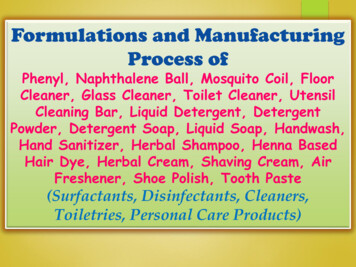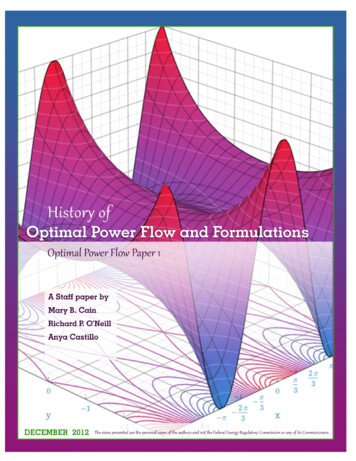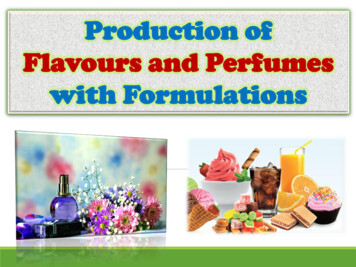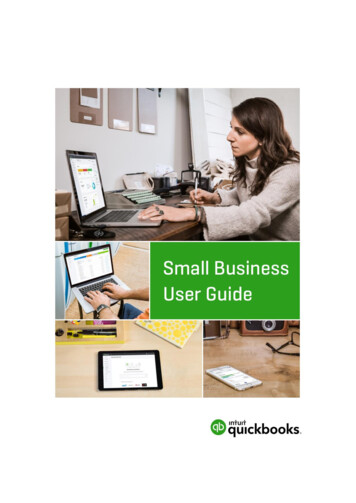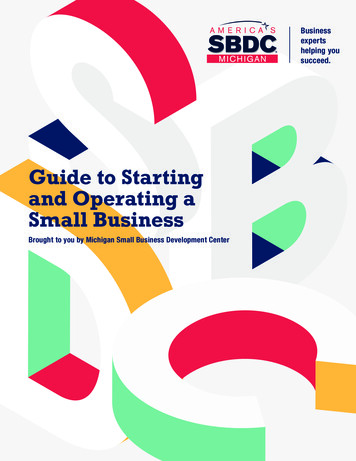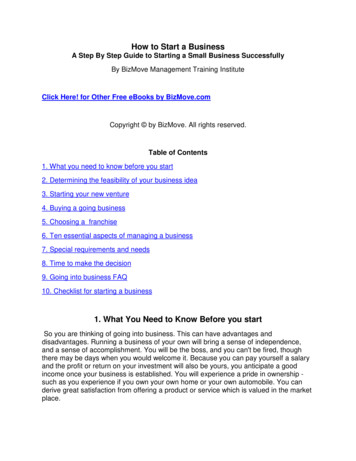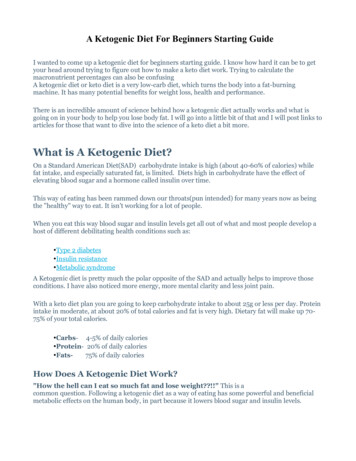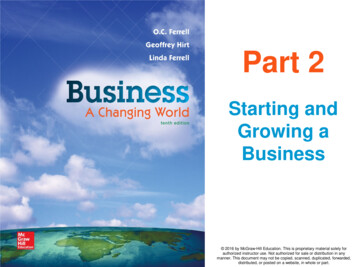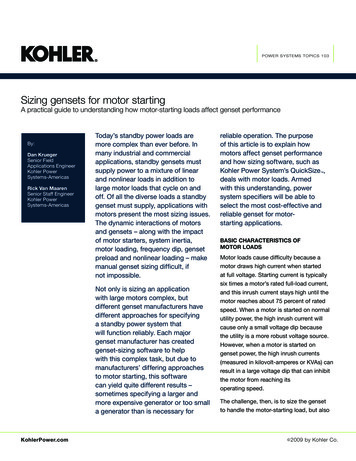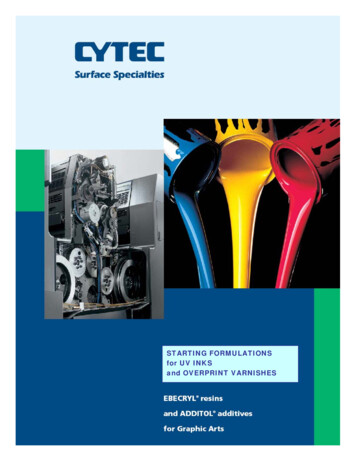
Transcription
STARTING FORMULATIONSfor UV INKSand OVERPRINT VARNISHES1
CONTENT1. UV offset ink starting formulations1.1.1.2.for Paper and Board . .page 1for Plastics (and metals) . .page 12. UV flexo ink starting formulations2.1.2.2.for Paper and Board . .page 4for adhesion to difficult substrates . .page 53. UV screen ink starting formulations3.1.3.2.3.3.3.4.3.5.3.6.3.7.3.8.3.9.On paper .page 7Water dilutable formulation on paper (posters). .page 7On PVC (Polyvinylchloride) .page 7On PE (Polyethylene) .page 8On PP (Polypropylene). . .page 9On PS (Polystyrene). . . . page 9On Polyester . . . .page 9On PET Bottles. . . page 10On PC (Polycarbonate). . . page 105. UV Inkjet ink starting formulations . . page 114. UV OPV starting formulations4.14.2For paper and board. . . page 12For plastics . . . page 122
1. UV offset ink starting formulations:1.3.for Paper and Board:ProductEbecrylTM657Ebecryl 3420OTA480Stabilizer Additol S120Special Black 250 (Degussa)Irgalite blue GLO (Ciba)Irgalite Red SMA (Ciba)Permanent yellow DGR (Clariant)PB61:1PO34TalcPhotoinitiator blend (1)Rad-Wax 62EB 1410031014100GrindMixViscosity adjustmentRemark: PO34 in yellow should preferably be added as a concentrated paste in thesecond part of the formulation.1.4.for Plastics (and metals):ProductEbecrylTM436 or EbecrylTM446Ebecryl 220TMPTAStabilizer Additol S120Special Black 250 (Degussa)Irgalite blue GLO (Ciba)Irgalite Red SMA (Ciba)Permanent yellow DGR (Clariant)PB61:1PO34TalcPhotoinitiator blend (1)Rad-Wax 62EB (Kromachem)Ebecryl .5410031020.54100GrindMixViscosity adjustmentPI Blend : 14 % BP, 34 % BDK, Irgacure 369(*) 7 %, ITX 13 %, EPD 32 % (*Ciba)If necessary, for improvement of ink water balance, about 10% of Ebecryl 436 can bereplaced by Ebecryl 870.3
2. UV flexo ink starting formulations:2.3.for Paper and Board:Pigment pastesEbecrylTM 450Ebecryl 3420Solsperse 32000Solsperse 5000Solsperse 22000Additol S120Permanent Yellow DGR (Clariant)Sunbrite 219-0203 (4BY) (SUN)Irgalite blue GLO (Ciba)Special black 250 (Degussa)TotalInks% pigment in the inkYellow pasteMagenta pasteCyan pasteBlack pasteEbecryl 160Ebecryl 40Modaflow 2100PBZEPDIrgacure 369 5100Note: Formulations given here are based on pigment concentrations used on themarket. These inks are designed to be printed with anilox delivering 1.3gr/m² andachieving the standard optical densities of prints. (1.25 for yellow; 1.4 formagenta and cyan and 1.8 for black). The black ink has been intentionallyformulated as a monopigmented one, which is not the market reality, thedifference being only about 1% of alkali blue pigment.4
2.4.for adhesion to difficult substrates:Pigment pastes (1)TMEbecryl 450EbecrylTM 3420TMPTASolsperse 39000Solsperse 32000Solsperse 5000Solsperse 22000Additol S120Permanent Yellow DGR (Clariant)Sunbrite 219-0203 (4BY)- (SUN)Irgalite blue GLO (Ciba)Special black 250 (Degussa)TotalPigment pastes (2)TMEbecryl 140EbecrylTM 3420TMPTASolsperse 39000Solsperse 32000Solsperse 5000Solsperse 22000Additol S120Permanent Yellow DGR (Clariant)Sunbrite 219-0203 (4BY)- (SUN)Irgalite blue GLO (Ciba)Special black 250 005
Inks% pigment in the inkFormulationPigment pasteEbecryl 7100TMPTAModaflow 2100ITX (or PBZ if ITX should not be used)EPDIrgacure 369 tes:With this formulation the pigment paste is ground using a three roll mill. Thispigment paste is then formulated with the diluents and photo initiators shown inorder to produce an ink. These are starting point formulations, some adjustmentwill be required in order to optimize these formulations for a specific application.The viscosity required is around 500- 700 mPa.s at 2500 sec-1.An amount of HDDA ( 10%) may used. It should also help to improve adhesionbut will lead to a slower cure speed.The photo initiator levels can be altered in order to change the cure speed.The pigment levels proposed here give standard optical densities of 1.25 foryellow, 1.40 for magenta and cyan, 1.80 for black at a coat weight of 1.0 to 1.25g/m2.It is possible to improve the appearance of the black ink by adding a smallamount of blue to it.6
3. UV screen ink starting formulations:Screen inks are being used on a wide variety of substrates.3.1. On paperRaw materialsPartsEbecryl 605Ebecryl 7100TPGDAPIAerosil 200Pigment paste5010165220.3.2. Water dilutable formulation on paper (posters)Raw materialsEbecrylTM 2003EbecrylTM 11EbecrylTM 12WaterPIAdditol VXL 4951Aerosil 200Pigment pasteParts305101550.5240Pigment pasteEbecrylTM 2003EbecrylTM 2047Pigment3550153.3. On PVC (Polyvinylchloride)InkOPVRaw materialsEbecrylTM 605EbecrylTM 584EbecrylTM 210EbecrylTM 81HDDAPIAdditol VXL 4951Parts40158151052Raw materialsPigment pasteEbecrylTM 584EbecrylTM 7100EbecrylTM 303EbecrylTM 1039VCLPIAdditol VXL 4951Parts203015205550.57
3.4. On PE (Polyethylene)On flexible PE (packaging)Ink:Raw MaterialsPigment pasteEbecrylTM 5129EbecrylTM 7100HDDAPIAdditol VXL 4951Aerosil 200Parts20242424511Pigment pasteEbecrylTM 745TMPTAPigment403030On hard PE (bottles, cosmetics, .)Raw MaterialsPartsPigment pastePigment pasteEbecrylTM 220EbecrylTM 7100HDDAEbecrylTM 1039DPGDAPIAdditol VXL 4951Wax25251211810413EbecrylTM 745TMPTAPigment4030308
3.5. On PP (Polypropylene)Raw MaterialsPartsPigment pasteEbecrylTM 586EbecrylTM 7100DPGDATMPTAPISiliconePigment paste3283664120EbecrylTM 745TMPTAPigmentRaw MaterialsPartsPigment pasteEbecrylTM 745EbecrylTM 303PETIAPIAdditol VXL 4951SiliconePigment paste23171050.5215EbecrylTM 745TMPTAPigment403030On PP buckets or hard PP4030303.6. On PS (Polystyrene)Raw MaterialsPartsPigment pasteEbecrylTM 745EbecrylTM 7100IBOAEbecrylTM 303PIAdditol VXL 4951Pigment paste20.51510256.5320EbecrylTM 745TMPTAPigment4030303.7. On PolyesterRaw MaterialsPartsEbecrylTM 5129PETIAHDDAPIAdditol VXL 4951Silicone28471940.519
3.8. On PET BottlesRaw MaterialsPartsEbecrylTM 745HDDANVPPIAdditol VXL 4951Pigment paste37171051303.9. On PC (Polycarbonate)Raw MaterialsPartsPigment pasteEbecrylTM 294EbecrylTM 220PETIANMPPIAdditol VXL 4951Pigment paste156.5341650.520PETIAPigmentPhotoinitiator blend (PI):ITX:EPD:BZP:BDK:Irgacure 369:13%14%13%40%20%307010
5. UV Inkjet ink starting formulations:Pigment pastes:TMEbecryl 151AdditolTM S 120Solsperse* 22000Solsperse 5000Solsperse 39000Yellow pigmentBlue pigmentRed pigmentSB250 (Degussa)TotalYellow 1100Black20411515351100Suggested formulation for inkPigment pasteDPGDAHDDAEbecrylTM 1039PBZEPDIrgacure 369 (Ciba)TotalEbecrylTM 151DPGDAHDDAEbecrylTM 1039Yellow Magenta2020414115151515335511100100: grinding resin: base diluent: improve adhesion to plastics: improve flexibilityImportant remark: There is currently a lot of patent literature published and caremust be taken not to infringe any of these patents.11
5. UV OPV starting formulations:5.1For paper and board:EbecrylTM 6040DPGDAEbecryl 7100BenzophenoneCPKEbecryl 3505.2: 36%: 43%: 15%: 4%: 1%: 1%For plastics:PVC:Ebecryl 584HDDAEbecryl 7100BCPKEbecryl 1360: 50%: 35 %: 10%: 4%: 1%PE filmEbecrylTM 40Ebecryl 145Ebecryl 5129Ebecryl 8402Ebecryl 2001Ebecryl 3420BenzophenoneCPKEbecryl 7100: 40%: 10%: 10%: 5%: 3%: 10%: 5%: 2%: 15%12
The viscosity required is around 500- 700 mPa.s at 2500 sec-1. An amount of HDDA ( 10%) may used. It should also help to improve adhesion but will lead to a slower cure speed. The photo initiator levels can be altered in order to change the cure speed. The pigment levels proposed here give standard optical densities of 1.25 for

